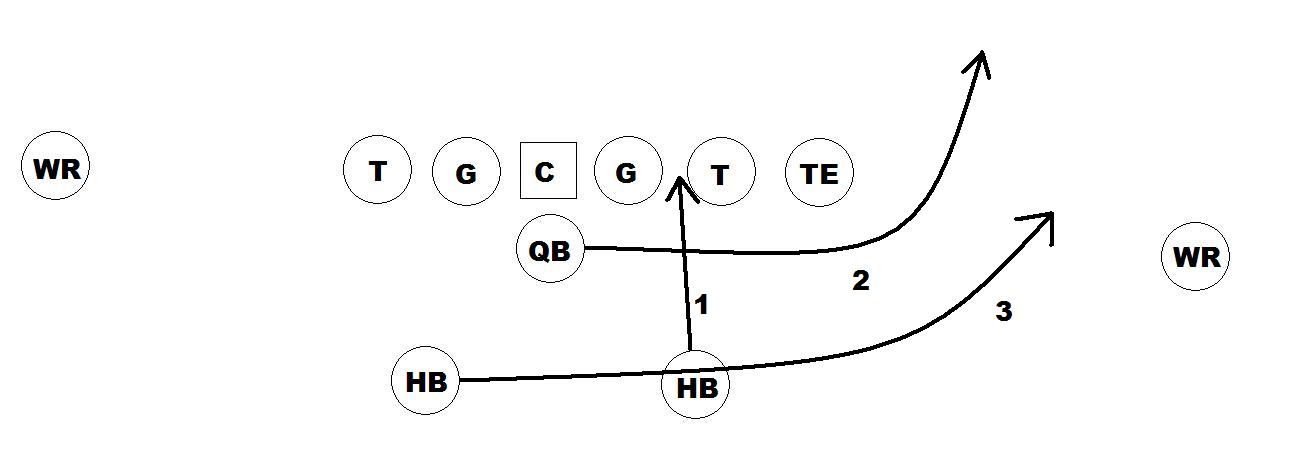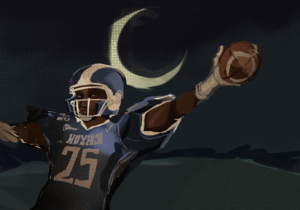Each Sunday at 1, I settle in with my lunch and an illegal Reddit stream to watch my beloved Buffalo Bills in action. Around 2 I snap my laptop shut and lament the incredible fall from grace Western New York’s finest football team has experienced since making the NFL playoffs only last year, while going about the rest of my Sunday ever so slightly more irritable than usual. Why? Because the Bills are probably toast, and there’s no hope of a comeback. After nine games, we’ve lost by more than a two-touchdown margin on five occasions, while scoring two touchdowns or more only twice. 0-4 since Josh Allen went down with an elbow injury against the Texans, Sean McDermott gets the unenviable task of deciding whether to trot out career journeyman Derek Anderson or interception philanthropist Nathan Peterman at quarterback each week. Don’t tell McDermott that though – he still needs to look at the tape. There has to be a better way to run an offense.
The Bills are hardly the league’s only team with offensive woes, however. Dak Prescott has 11 touchdowns and nine interceptions in his last 11 outings and is looks less like the Cowboys’ franchise QB with each passing week. The Cardinals have already been doubled by the Rams in total yardage as Josh Rosen has been thrown to the wolves in his rookie season, while the 49ers will have to wait another year for a full season of Jimmy Garoppolo as backup CJ Beathard was benched in favor of rookie Nick Mullens this week. San Francisco had only one win entering last week’s Battle of the Bay, but you could hardly tell in the 34-3 drubbing as Jon Gruden continues to oversee the dumpster fire that is the 2018 Oakland Raiders in between spells of thumbing through his wallet. All of these teams are shoehorning in incompetent and/or inexperienced quarterbacks into a system suitable for only the league’s better signal-callers, and the results have been ugly.
Meanwhile, in the college ranks, the Army Black Knights traveled to play the No. 5 Oklahoma Sooners as 29-point underdogs in Norman on September 23rd. Utilizing their triple-option offensive attack, Army nearly pulled off the upset of the season, falling 28-21 in overtime. The Black Knights’ game plan was simple – keep Kyler Murray and the Sooners offense off the field. And what a masterful job they did, holding the ball for 44:41 and running 87 plays to the hosts’ 40. Against a juggernaut that has averaged 51.8 points per game in their other matchups with a 26.7 point average margin of victory, lowly Army gave up only 21 points in regulation and was a hair away from escaping with a legendary W.
The Army-Oklahoma game was, among other things, the celebration of an offense that has gone the way of the dinosaur in college football in the last thirty years. To some, it asked the question of why more outmatched college football teams don’t embrace the triple option. For myself, watching the Bills every weekend has made me wonder why NFL teams won’t.
The most appealing aspect of the triple option is clearly the possession advantage it gives teams. For teams without a capable quarterback, this is the central reason they would be interested – none of those aforementioned teams are going to have any luck trading scores with the Rams, Chiefs, or most of the league. Additionally, teams with a general lack of offensive talent (the Bills, really) can theoretically bridge a talent gap by running the option. This is Army’s goal.
In brief, the triple option is an offensive scheme that keeps the ball on the ground on almost every play, employing misdirection and motions to keep defenses guessing. The playbook is tiny, perhaps only a dozen plays or less, but teams that commit to the option long-term are always adding myriad variations and wrinkles to the basic looks. As many as three running backs can flank the quarterback, while two defenders are usually left unblocked; the “option,” in its most basic form, is the quarterback’s reading the unblocked defender and quickly deciding from a few choices. First, he can hand the ball off to the diving fullback or fake the dive and run outside himself. Then, he reads the other unblocked defender and decides to pitch the ball to the tailback running with him, or fake the pitch as well. This YouTube clip shows highlights of Georgia Tech’s triple option. Risk mitigation is the name of the game: a well-run option features almost no negative yardage plays and very few three-and-outs. They say field position determines the outcome of football games, and the option gives teams considerable ability to rarely give their opponent’s short fields. Current FBS teams running the option include Georgia Tech, Georgia Southern, New Mexico, and each of the three service academies: Army, Navy, and Air Force.
There are a number of advantages an NFL team has running the triple option, besides dominating time of possession. Prepping to face the triple option would be maddening for NFL coaches, most of whom have probably never coached against an option team. The so-called “pro-style” systems that comprise the majority of the NFL’s offenses are each slightly unique, but defending a triple option means a total rewiring of defenders’ brains in just a week. And about those defenders: the way the NFL is going, an option team could create serious personnel mismatches against an opposing defense. As the spread concept continues to become more popular in the league, teams are investing heavily in cornerbacks and safeties, coverage linebackers, and long, athletic edge rushers. These are the opposite of the ideal players to defend the triple option – you’re looking for linemen that can’t be moved and thumping linebackers that will have to make 15 tackles apiece. Meanwhile, finding the personnel to run the triple option short-term shouldn’t be an issue: Terrelle Pryor, one of the most suitable players in the league to run the option given his athleticism, was just signed by the Bills last week, while every QB that ran the option in college doesn’t have an NFL job. Capable running backs, for their part, are a dime a dozen in the league.
These points are being made for teams who would consider implementing the option for a time before they find their franchise quarterback or he returns to the lineup. Wouldn’t it be something if a pro team committed to a triple option coach like, say, Army’s Jeff Monken? There’s certainly contrarian advantages. Consider the amount teams in the NFL are spending to find that franchise quarterback – 8 percent of the cap on average. Option quarterbacks like Pryor could be signed for the league minimum, freeing up a great deal of cap room for the team to invest in other positions. Speaking of, forget about giving truckloads to pass-protecting blindside tackles and elite wide receivers – Gruden got the picture when he flipped Amari Cooper for a 1st rounder – reinvest in the cheaper options: run-blocking linemen and tight ends and plenty of running backs. Then build a kickass defense with what’s left over.
Obviously, embracing the triple-option has its downsides. In the short term, a question is how teams would implement the system they want to run down the road when a top quarterback joins the fold. Additionally, what would a short-term adoption mean for head coaches? Coaches that aren’t winning but don’t have a bona fide starting quarterback generally get better job security: would the option shorten that leash, turning off HCs?
Most of all, however, there’s the issue of the option’s perception. That is: it’s boring. It’s repetitive. And it sucks the life out of the fans, when it’s supposed to be sucking the life out of the defense. The option will likely never gain traction in the NFL for that reason: the fans might get fed up even if the option is producing wins. Then again, if you talk to me at 2 on Sundays I’m usually pretty fed up – the option is better than anything we’re doing.
Image Credit: Wikimedia Commons





